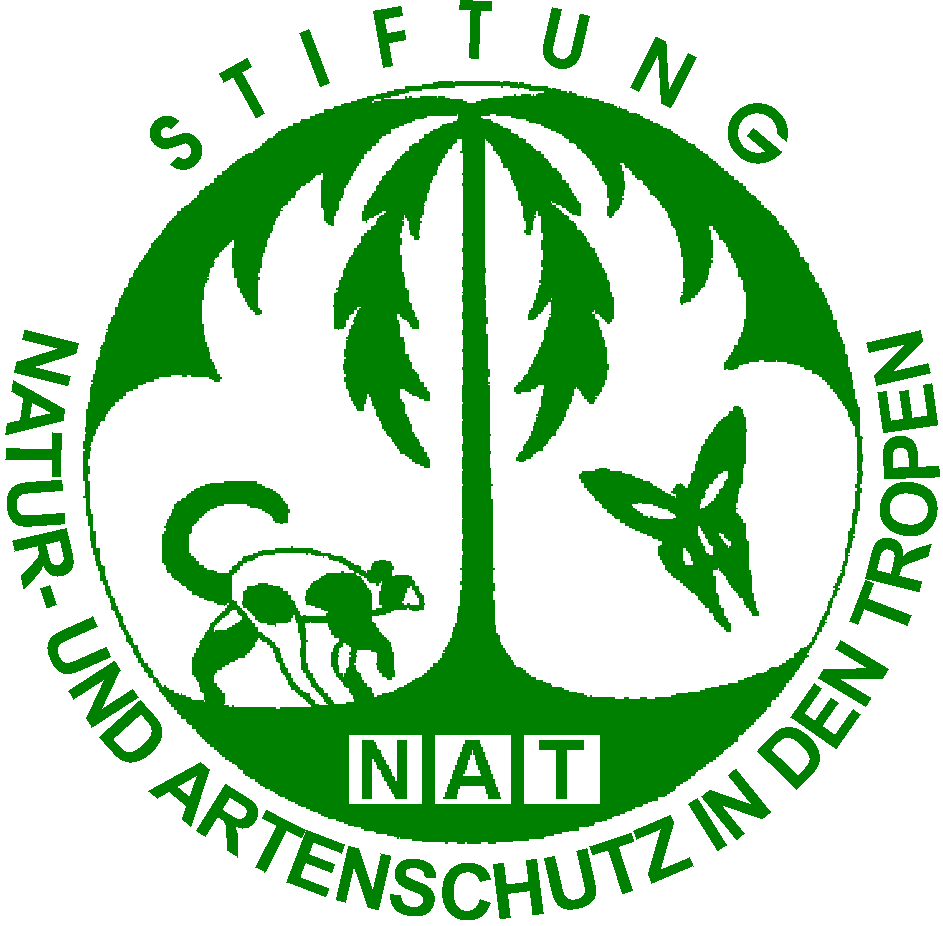
 |
Projects |
Initial Situation
Madagascar is the fourth largest island on earth with a special history. Around 70 million years ago, the island had separated ultimately from the African continent. Since then, it has had its own evolution with a flora and fauna that can only be found here and nowhere else in the world. Especially this unique nature is now particularly endangered by man. The island, which had formerly been completely covered by wood, was colonised by man only 1000 years ago. Most of them came from close-by Africa, others came with boats along the coasts from the indomalayan archipelago. Over the centuries, the immigrants developed towards one people consisting of nineteen ethnics with a common language. By now, around half the people have converted to Christianity, the others worship various natural religions, but the living of the Christian population is still strongly influenced by their aboriginal belief. Thus, special ancester worship and many taboos (Fadys), influenced by weather, various days or daytimes, certain plants and animals impose obligations on people which strongly affect modern development in the western sense. Also for this reason, Madagascar belongs to the 10 poorest countries in the world.
The village of Andasibe and some fragments of rain forest are situated only around 100 miles to the east of the capital Antananarivo. Since 1989, Helmut Zimmermann, and later the NAT foundation, got involved there with habitat investigation for species and nature conservation. By then, the local population had predominantly lived on utilisation of the wood, especially on slash-and-burn nomadic cropping. In their opinion, their ancestors had left behind the wood for their utilisation. For two or three years, the ashes of the burned wood and the very thin humus layer allow a secure yet moderate harvest, however with the effect of eroded soil. Then, the next area of wood is slashed and burned, and so on. With the new government, further damage to the remaining rain forest became prohibited, which even increased poverty. We immediately became aware of the fact that behaviour modification of the population and the protection of their nature can only be achieved by confidence building and comprehension of our projects. This was realised for example in1991, when we assisted with planning a drinking water supply, with the realisation of sports activities for the youth (the two "football clubs" of the village lacked a football since two years), but to much greater extent in 1994, when the village was flooded by a huge cyclone which took a heavy toll on human life, pets, homes, and cultivable land. Our spontaneous collection in Germany brought first aid to the poor population of the village. But in our village meeting, plans and photos also confronted them with the fact that eventually they themselves had caused the eroded hillsides and the floods by their slash-and-burn behaviour.
Madagascan Golden Frog (Mantella aurantiaca)
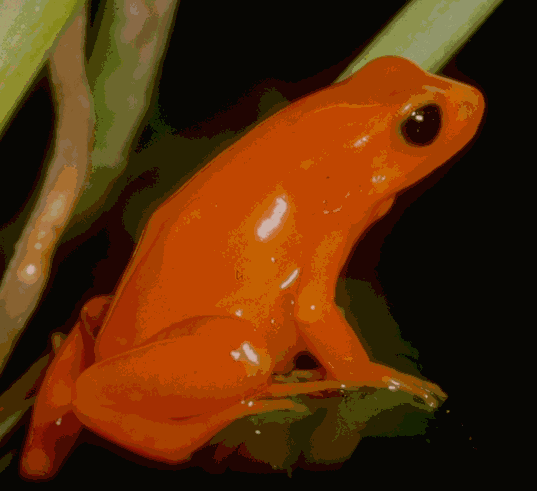
With the above mentioned and further confidence-building measures, and after years of collaboration with the Madagascans, we succeeded in persuading them of the value of their rare fauna and its protection (e.g. to set the Madagascan Golden Frog, which only lives here, on CITES), but also of the conservation of the rain forest marsh area, the habitat of the frog, which is now the "flagship species" of further 688 species in this area. After our extensive preparatory work and petitions, the area of 20.750 acres in size was added to the RAMSAR list of the UNESCO as an important wetland world wide on February 2nd, 2005 (similar significance as an eco-label like "world nature heritage").
Project goals and results to be expected
Due to our dedication we were invited by the national Madagascan organisation for nature conservation ANGAP to present our overall project with posters and large size photos at the Madagascan exhibition stall of the world exhibition EXPO 2000 in Hannover. Then we were asked to help to relieve the distress of the population in the nearby dragon tree rain forest area Maromiza and at the same time to save the flora and fauna of this unique wood area, which had already been degraded by two-thirds, from its final loss. On February 26th, 2001 we therefore closed a contract with the responsible Madagascan ministry, which should assure the protection, the conservation and the scientific mentoring of the Maromiza wood area on the one hand, but which, on the other hand, should also include the responsibility for the NAT foundation to provide new livelihood for the affected population like
Especially the eco-tourism in Andasibe with already 33% of all Madagascan tourists in this species-richest region of the island with the most animals and plants, shows promising sources of income. But there are preconditions:
By realisation of these goals we hoped to help the poor people to help themselves and thus give them new livelihood and opportunities to earn money, as well as save the unique nature. Additionally we hoped to at least partly repair the missing link of the eastern rain forests by reafforestation of basic parts of the degraded wood area.
Progress in time and content
First, the Maromiza wood area of 4.000 acres in size was measured by Madagascan geometricians and marked with cairns and small signs to show that illegal utilisation of the woods or hunt is no longer allowed here. A field station was not built by ourselves due to the undetermined ownership structure. Instead, a near-by cabin with electrical power and water supply was rent. In this cabin we installed the NAT office and the accomodation for the head of the station, she is a Madagascan biologist. A comfortable room with tables, blackboards, and the like served as a classroom and an assembly room. But due to a political crisis, the works had to be suspended as an entry to Madagascar was no longer possible in 2002. In the meantime, the NAT foundation sensitised the German public to the problems of Madagascar with lectures and exhibitions. For example, an exhibition on Madagascar was arranged at the botanical and zoological garden Wilhelma in Stuttgart, which lasted three months and attracted hundreds of visitors. But also high representatives of the newly and democratically elected Madagascan government as well as representatives of the federal state of Baden-Württemberg and the German federal government attended the exhibition and pleaded for the realisation of the goals of the NAT foundation (see exhibition catalogue).
Our work in Madagascar could be restarted in 2003. We started talks (meetings) with the people, the representatives of the local authorities, the administration of the district town Moramanga and the ministries and their responsible departments in the capital Antananarivo. Soon we could establish a perfect collaboration with the new government. The minister for the environment enacted a strict ban on slash-and-burn as well as deforestation. The park guards and the project manager started their work, and a NAT office was established in the capital. The scientific examinations for the inventory of the flora and fauna were continued and reinforced, also in order to demonstrate the high value of this area to the Madagascan authorities, the population and the eco-tourists. The project attracted special attention in public (press and television) on March 27th, 2004, when the president of Madagascar accompanied by ministers and their attendants (12 people) landed in the Maromiza wood with two helicopters and made a short visit to the preliminary trails. Also the conferring of the national order of the Republic of Madagascar to Helmut Zimmermann by the Madagascan president of the senate on May 24th, 2004 contributed to the NAT foundation's reputation. Programmes on German television (ZDF, ARTE, and 3SAT) showed the work of the foundation in German- and French-speaking countries. The low-budget sourcing of the work was still supported by private donators, by members of the NAT fundraising group, by the BIOPAT association (Patenschaften für biologische Vielfalt), by the Bundesverband für fachgerechten Natur- und Artenschutz e.V. and the German embassy. But when no more funding for Madagascar was available to the main sponsor BIOPAT, the completion of the overall project was at risk.
According to the contract between the NAT foundation and the Madagascan ministry of the environment, the project work had to be completed by 2007. The completion could only be secured with an amount of over 50.000.- € which consisted of the approval of a higher amount of the Landesstiftung Baden-Württemberg and the inclusion of further sponsors into the project financing like the Erwin-Warth Foundation for flora, fauna, environment, Conservation International with Tany Mewa, interest groups Phelsuma, PrimaKlima weltweit e.V., Zoo Kölle Herr Landes, the Förderkreis NAT and private donators. The established long-term team of the NAT foundation consisted of the biologist Dr. Blanchard Randrianambinina, representative of the NAT in Madagascar, the certified biologist Harisoa Vololonarivo, the gardener Mila Trasa, the rangers and guards Pafo Volontiana and Hermano Raveloarison. Madagascan specialists of ANGAP contributed to the education for establishing tree nurseries and reafforestation, and due to the instructed reafforestation works, around 60 families of the village could earn their living. Thus we were able to successfully achieve three targets from 2005 to 2007: Registration of the biodiversity and eco-tourism, environmental education, as well as reafforestation with autochthonal plants. Additionally, we could sensitise the population for our work and give them a secure income.
Registration of the biodiversity and eco-tourism
"You can only conserve what you know". This was the proposition to sensitise not only the NAT scientists but also external researchers to make an investigation in the Maromiza wood. It took place in a national and an international context by individually researching scientists, by groups of scientists (e.g. ornithologists, mammologists, and entomologists of the National Museum for Natural History Stuttgart, primatologists of the University of Veterinary Medicine Hannover, and the GERP primatologists from Antananarivo) or departments of the Antananarivo University (with over 40 botanists). The following table gives a survey of the biodiversity of the Maromiza wood, whereas the results of the botanists had not been available when the table was set up.
DRAGON TREE RAIN FOREST MAROMIZA BIODIVERSITY AND ENDEMISM |
||||
1.180 ha rain forest and 420 ha wasteland, Maromiza |
MADAGASCAR |
|||
16 km2 |
587 000 km2 |
|||
Fauna |
Species |
IUCN/CITES etc. |
Endemic |
Species |
Lemurs |
16 |
16 |
100% |
32 |
Other mammals |
32 |
>13 |
30% |
~90 |
Birds |
86 |
>28 |
87% |
~256 |
Reptiles |
20 |
>9 |
100% |
~290 |
Amphibes |
66 |
>2 |
100% |
~170 |
Lepidoptera |
461 |
? |
? |
? |
Coleoptera |
471 |
? |
? |
? |
Total |
1152 |
|
|
~838 |
|
as of 2006 |
as of 1994 |
as of 1994 |
as of 1994 |
Flora or Orchids |
300 |
|
|
? |
Orchids |
63 |
|
~85% |
960 |
Total |
363 |
|
~89% |
>7.300 |
The table does not yet contain the examination results of the 40 botanists from the University of Antananarivo.
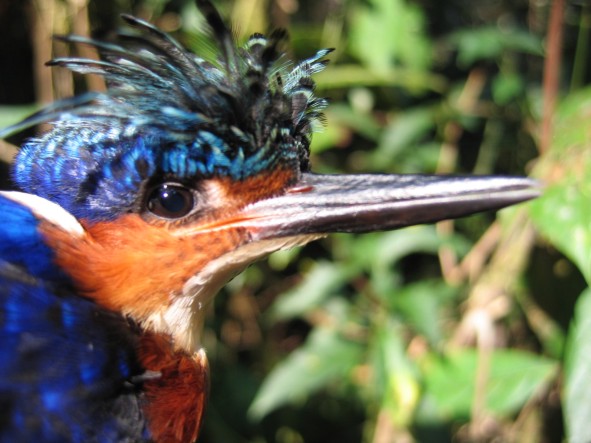
|
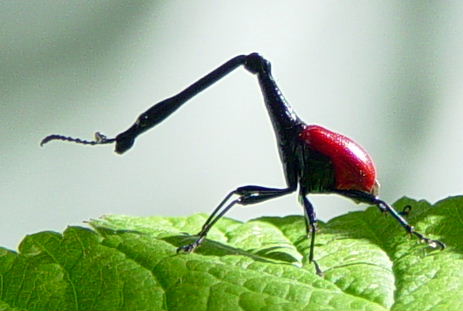
|
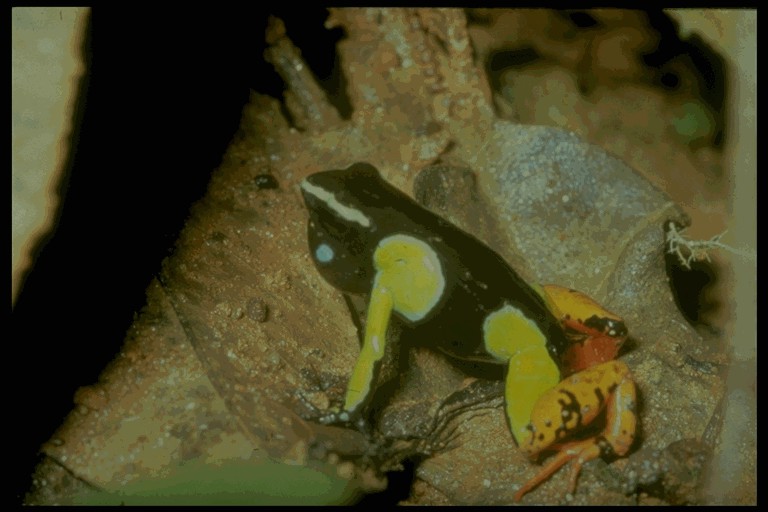
|
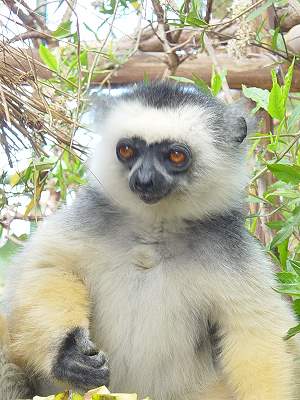
|
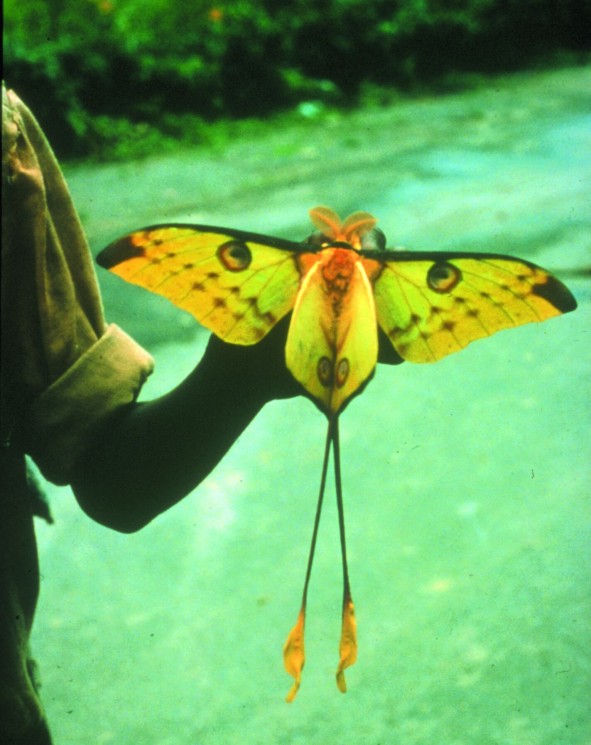
|
| Photos: martin-pecheur malachite, giraffe necked weevil, coloured mantella, diademed sifaka, and comet moth | ||||
Also in 2005, we started building trails with treads (because of the mountainous area) which were made from eucalyptus wood, small wooden bridges over the numerous creeks, enclosures and balustrades at steep viewpoints, two elementary small camping grounds with cabins and campfire sites, cabins for the guards at the entrance and the like. The nature trails pass by a dense population of various orchids. Various animals can be watched at dedicated places: The diurnal and nocturnal lemurs, like the biggest Madagascan lemur, the indri, the most beautiful lemur, the diademed sifaka, the rarest like the aye-aye or the hairy-eared dwarf lemur or the smallest primate of the world, the mouse lemur. Along the creeks, streams and waterfalls, a huge number of different species of frogs can be found. Many of them are still unknown (like the reptiles) and not yet scientifically specified (in the Andasibe area there are more than one hundred different species of frogs). At the stone pit and in the tree tops you can find a lot of wonderful, coloured birds. Beside the creeks and little lakes, there are conglomerations of huge old dragon trees, and from the heights like the Pico de Maromiza (753 miles in height; Maromiza=Maromizaha means "see a lot") you have a wide view over the original mountainous rain forests but also over many destroyed areas.
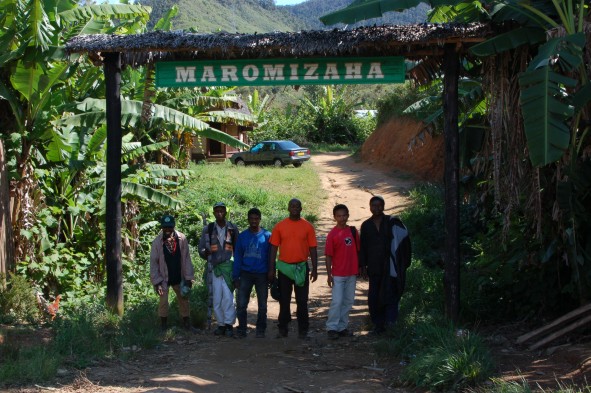
|
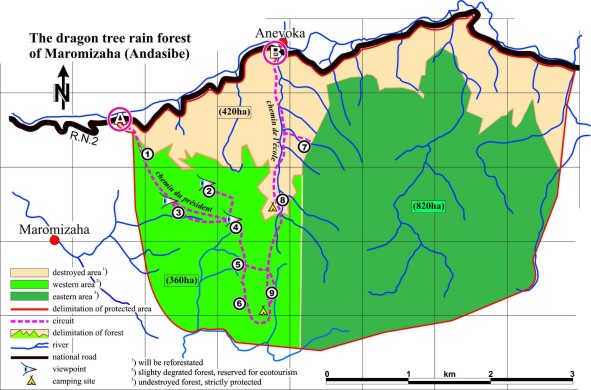
|
| Entrance to the protection area Dragon Tree Rain Forest Maromiza (in the background: guard cabins, information boards etc.) | |
Unfortunately, the spirit of the president and his young staff (many of them had been educated in Germany) has not yet achieved acceptance in many authorities with regard to transparency and efficiency of their work and presentation. This is often to the disadvantage of their own people. In our request for extension for the LSBW dated February 9th, 2007, we constituted that our works on eco-tourism had virtually been completed. But the responsible officers of the authority waters and woods took a lot of time with their final acceptance. The amount of money which they demanded for the acceptance seemed exorbitantly high to us, so we refused. Due to our administrative appeal at the head office of the administration, the amount was halved, but again we had to wait a long time for the final acceptance. Because of the challenging climatic circumstances in the rain forest, especially during the rains, a renewal of the trails, treads, and shelters had since become necessary. Therefore, the people of Andasibe-Anevoka can only profit from the revenue of entrance fees, product selling and the like after a long delay.
Environmental education
The posters and leaflets financed by the LSBW mainly contributed to the environmental education by the NAT team, but also the acquired library with many reference books, instruments and equipment. The posters and leaflets were also spread, exposed, and discussed at the schools of Andasibe and its communities, as particularly the youth showed special interest in their nature. At presentations in Moramanga, the provincial capital, and in the capital Antananarivo, the NAT foundation showed posters and large size photos and also spread the leaflets at a stand. The visitors became informed on the biodiversity of the Maromiza wood, and its protection was promoted in lively discussions. Two further presentations on the same range of topics had been arranged in the community of Andasibe together with the mayor. They were even more important insofar as the people of the village were confronted with the sense of the conservation of their flora and fauna. The conservation of the natural resource "rain forest" and its utilisation by the eco-tourism (and thus their income) produced special interest during these detailed talks, but also the make-work projects for reafforestation, education by specialists in collecting seeds and seedlings, establishing tree nurseries and growings as well as the planting of the young trees for reafforestation. The education as a walking guide over many months by our head of the station Harisoa in our grand-scaled classroom as well as in nature was willingly accepted.
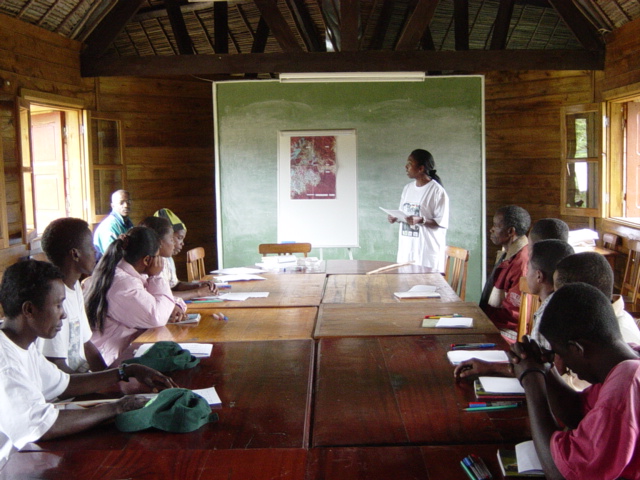
|
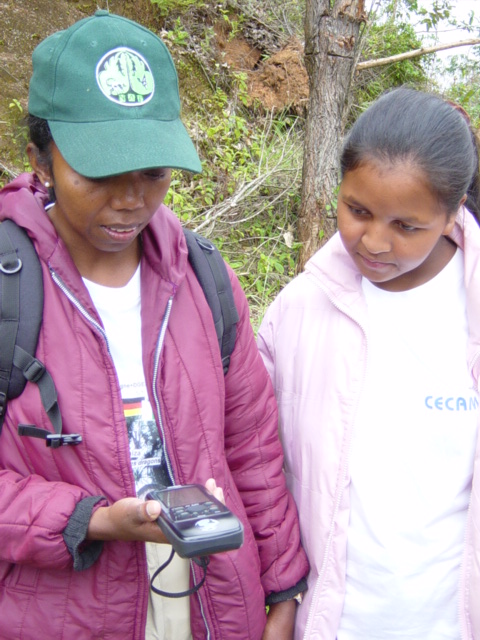
|
| Education of the NAT tourist guides in the classroom and GPS education outside | |
Reafforestation with autochthonal plants with involvement of the people
The recovery of the natural rain forest is of utmost importance for the conservation of the biodiversity and in this case even for the linking of two ecosystems in the eastern rain forest of Madagascar. Also in this matter, there has been a successful collaboration between the NAT foundation, lead-managed by the Madagascan forest directorate, the Madagascan administation for nature conservation ANGAP as their professional partner, and - besides the WWF - the greatest organisation for nature conservation, the Conservation International (CI). First, a dedicated group of workers of the village was educated in the multifaceted flora and its seedlings and seeds of the still existing rain forest. Then, a large-scale collection of the seedlings and seeds and their packing into little plastic bags with some humus soil was carried through. In the meantime, other workers established professional tree nurseries where the close-packed seedlings and seeds continued growing, protected with straw mats against the tropical sun. When they had reached the required size, depending on the tree species, they were placed into a prepared free area following a special system for reafforestation of autochthonal plants. This was often a little celebration for the poor people of the village. Despite rain (what is common in the rain forest), up to 60 families surged to the large planting area. In the beginning, a song was sung, and the priest of the community spoke some encouraging words, prayed and blessed the undertaking. The presents of the NAT foundation like bags of maize, corn and beans as well as a football for the people were not to be forgotten, and then the plants and shovels were taken to the plant holes which had been prepared with a thin layer of humus soil (of course, at the end of the day, the people received their well-deserved wages). Accurately, the plants were inserted deep enough, so that the next cyclone would not wash them away immediately. By this means, over the planting years from 2005 to 2007, 100,000 young rain forest trees were planted and cultivated on an area of around 250 acres. Yet not only eucalyptus and pine species were used, as it is common for reafforestation measures, but a large variety (first 29, later up to 57) of the different tree species of the adjacent original rain forest.
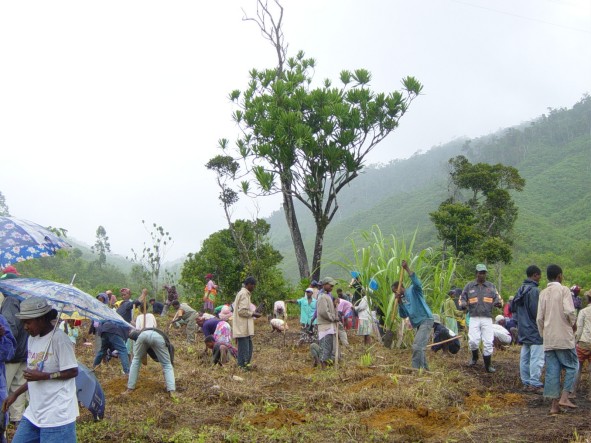
The people at reafforestation
The result of the works of the NAT foundation, which is a relatively small non-governmental organisation (NGO), might probably have produced interest in an international public. We were pleased that we could make allowance for the desire of the Nobel Peace Prize Laureate AL GORE in his well-known book "An Unconvenient Truth" (page 305 in the German release of 2006) insofar as our foundation was the only one which was mentioned on the referred web site
www.prima-klima-weltweit.de with our method of resolution "Reafforestation of the dragon tree rain forest Maromiza using autochthonal plants".Altogether, the six years of activity of the NAT foundation for the provision of work for the poor people by the managament of conservation and cultivation of the dragon tree rain forest Maromiza have been extraordinarily fruitful. The final deforestation of this core and link of the eastern Madagascan rain forest could be prevented by the activities of the NAT foundation just in time. Its six national parks were declared a "world nature heritage" by the UNESCO on July 27th, 2007. The complete Maromiza area of 4,000 acres in size is being declared a nature reserve due to an application of the NAT foundation and the information of the ministry, and shall be included into the world heritage. Furthermore, the project has been included into the Madagascan CO2 sequestration activities. According to calculations of experts, the reafforestation of the present 250 acres achieves a CO2 sequestration of 1,000 tons per year, that is a CO2 sequestration of 40,000 tons within the scheduled growing time of 40 years. A demonstration area of 10 acres has been established as a buffer area, for education and utilisation by the people. Here, fruit trees, vegetables, maize, pineapples and other agricultural crop can be cultivated; the first crop yields have already been achieved. The investigations on endemism and the probably highest biodiversity of Madagascar on a very small area allowed to show the public and the eco-tourists the high value of the Maromiza wood and its fauna. The installations for a cautious yet still attractive eco-tourism allowed to establish a lasting income for the local population.
As the cooperation contracts have now expired, the work of the NAT foundation has terminated. The "help for the people to help themselves" has been provided. Now the further management for Maromiza will be taken over by the Maromanga forest directorate with the group for primate research and nature conservation (Groupe d’ Etude et de Recherche sur les Primates de Madagascar, GERP), whereat the Kreditanstalt für Wiederaufbau is willing to make a financial contribution after the final declaration of Maromiza as a nature reserve and the assignment to ANGAP.
Also the further reafforestation works will be carried out by the people of Maromiza-Anevoka, now by GERP instead of the NAT foundation. Besides the above mentioned sponsors, it was mainly due to the financial support of the Landesstiftung Baden-Württemberg, that this large project could be successfully realised and finalised, especially for a relatively small non-governmental organisation (NGO) like the NAT foundation.
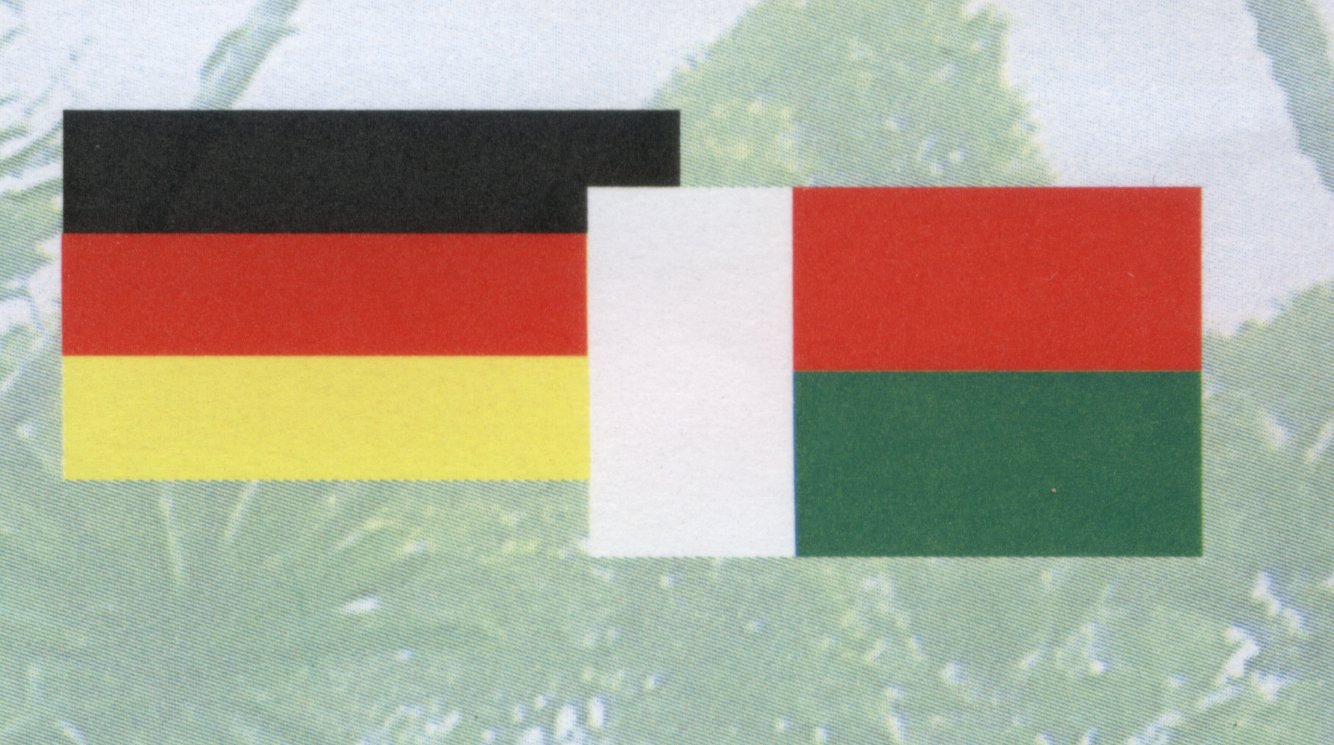


April 01, 2007:
The Karlsruhe Zoo also takes part in the pan-European „Madagascar Conservation Campagne“ of the EAZA (European Association of Zoos and Aquaria) from April to December 2007. The opening ceremony with the 1st mayor of the city took place in the hall of the monkey house on March 30th, 2007. For the inaugural address, the Zoo had invited the Foundation for Tropical Nature and Species Conservation (NAT) as a professional partner.
The president of the NAT foundation, Helmut Zimmermann, first thanked for the invitation by the director of the zoo, Dr. von Hegel, and her active assistants Dr. Clemens Becker and Dr. Ulrike Stephan. He gave an account of his experience in the moore area Torotorofotsy in Madagascar, which had been integrated into the RAMSAR list of the world's most important wetlands (similar significance as an eco-label like "world nature heritage") by the UNESCO due to his works and his initiative. He also mentioned the difficult works in the Maromiza rain forest, where he and scientific assistants could prove the highest biodiversity of Madagascar, the development of a subarea for a „cautious tourism“, as well as the reafforestation of burnt down woods using about 100,000 young rain forest trees which had been grown in NAT tree nurseries. He thanked all sponsors for their financial support, ranging from the Landestiftung BW, the Conservation International/Tany Mewa, PrimaKlima over pet shops like Kölle Zoo to working groups like the interest group Phelsuma and private initiatives.
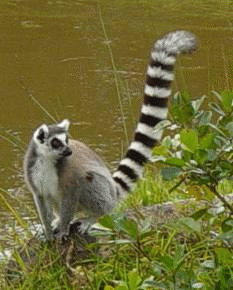 Photo © H. Zimmermann, NAT
Photo © H. Zimmermann, NAT |
The vice president of the NAT foundation, Dr. Peter Wüst, illustrated the organisation and the goals of the foundation (which celebrates its tenth anniversary in this year), which are the conservation of the biodiversity and the protection of the rain forests, especially of the Maromiza dragon tree rain forest in Madagascar, and its reservation and partial reafforestation, which is also a small contribution to the reduction of the global CO2 emissions. Thereby he pointed out that the work of the NAT had gained ultimate recognition with the conferring of the national order of the Republic of Madagascar to Helmut Zimmermann by the Madagascan President Marc Ravolamanana. While the male chimpanzee was resolutely knocking against the windows of his cage on one side of the hall, thus protesting against the numerous participants of the Madagascar event, a big family of ring-tailed lemurs accompanied the visitors on the other side with reliance and curious friendliness. |
March 12, 2007:
The species-rich Maromiza dragon tree rain forest near Andasibe had partly been destroyed by deforestation as well as slashing and burning. In the last two years, the German Foundation for Tropical Nature and Species Conservation (NAT) has already reafforested with over 39,000 young rain forest trees of about 30 different autochthonal species with the financial support of the Landesstiftung Baden-Württemberg, PrimaKlima weltweit and other sponsors. Now, over 60,000 seedlings in the NAT owned tree nurseries are ready for planting (financed by Tany Meva, Madagascar). Thus, 100,000 small trees – no pines or eucalyptus but home-grown tree species – will be newly planted soon.
According to the present scientific survey, this rain forest probably accomodates the highest density of species in Madagascar on an area of only 4,000 acres, amongst others also the famous, bizarre giraffe necked weevil Trachelophorus giraffa (which had inadvertently been named bizarre guitar necked weevil on December 6, 2005 on our nature reserve page). The males have a very long neck, nearly as long as the whole body. It can often be found in the Maromiza wood, yet it is difficult to discover due to the size of its neck of only 0.5 inches and its body of only 0.55 inches. Furthermore, it flies away quickly at appropriate air temperature when it is touched.

Giraffe Necked Weevil (Photo: © H. Zimmermann NAT)
October 29, 2006:
Currently, bad news from Madagascar is increasing concerning spacious forest fires „feux de brousse“, for example
Due to an efficient observation of the Maromiza nature reserve by the NGO NAT and further activities in cooperation with the local population for nearly six years, no more forest fires have been recorded in the only link between the northern and the southern rain forest of Madagascar near Andasibe, just on the contrary:
2004: Precise planning for the afforestation of the destroyed part of Maromiza (see Klaus Heimer: „Einzigartiger Regenwald in Madagaskar gerettet“, Rheinpfalz, February 10, 2004)
2005: Beginning of the first reafforestation of 4,000 young autochthonal trees together with the local population in the presence of the Madagascan authorities (see www.madagasikara.de, Madagascan television and newspapers dated April 11, 2005)
2006: Further afforestation of 34,000 seedlings of 36 different autochthonal tree species. 60 villagers and Madagascan tree specialists became employed. Two new tree nurseries were established and seeds and seedlings were cultivated for further planting.
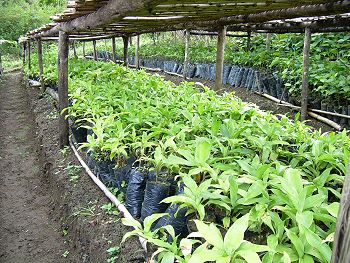 As seedlings could not be bought, NAT themselves and some tree specialists have collected seeds and seedlings of 36 different tree species from the adjacent rain forest area and grown in the ad hoc established tree nurseries until they were ready for planting. From these tree nurseries, 36,000 young trees were placed into a prepared free area in July and August. |
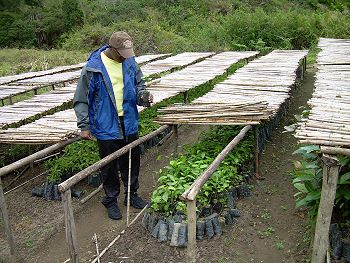 The biologist Dr. Blanchard Randrianambibina checking the seedlings for their survivability before bedding out. |
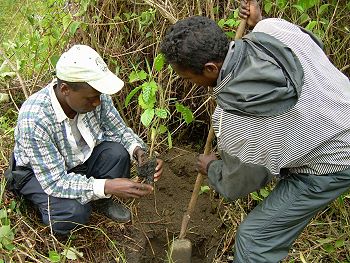 Workers, bedding out the seedlings |
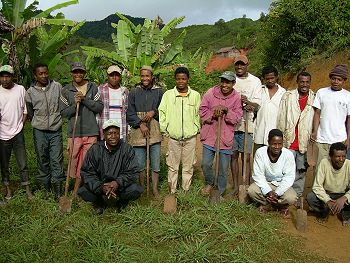 All in all, 60 poor villagers had been employed for the reafforestation in July and August 2006. The earnings which they received for their work improved their standard of living, but they were also sensitised for the value of their work and for the conservation of the rain forest. |
|
These works only became possible due to the financial support of: Landesstiftung Baden-Württemberg - Stiftung Entwicklungszusammenarbeit BW, Conservation International - Tany Meva, Kölle Zoo, interest group Phelsuma, PrimaKlima weltweit - Märkisches Landbrot, Förderkreis NAT. Thus, the NAT foundation not only contributes to the protection and conservation of the Maromiza rain forest area with its unique biodiversity in Madagascar, but also to the overall „Projet conservation de carbon – Restauration du Corridor Vohidrazana-Maromiza-Mantadia“. |
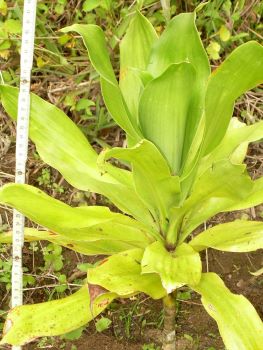 The young dragon tree of the year 2005 is already about 19 inches high. |
December 06, 2005:
At the end of the year 2005, a German group of scientists with Madagascan assistants left for the Maromiza dragon tree rain forest near Andasibe for the third time to investigate its bird life and mammal fauna. The group worked under the direction of Dr. Friederike Woog (birds) and Kathrin Marquart (small mammals) of the Staatliches Museum für Naturkunde Stuttgart (SMNS). Especially in the almost intact old-growth forest of the area, exciting results and new species may be expected again.
So far, the researchers from Stuttgart classified 77 species of bird, 21 species of mammal (lemurs excluded), 811 species of moth (including the comet moth, which is the biggest with up to 11 inches in size), and 1001 different beetles of 10 species (including the bizarre giraffe necked weevil).
Already before, assistants of the Groupe d'Etude et de Recherche sur les Primates de Madagascar (GERP) working under the direction of Prof. Dr. Berthe Rakotosamimanana had also discovered new species among the lemurs of the Maromiza wood, thus the number of lemur species has by now increased to 16, which is the highest biodiversity of lemurs in a nature reserve in Madagascar. Much to the regret of all primatologists and nature lovers, Prof. Dr. Berthe Rakotosamimanana has died unexpectedly in November 2005.

Giraffe Necked Weevil (Photo: © H. Zimmermann NAT)
April 09, 2005:
The Foundation for Tropical Nature and Species Conservation (NAT), which is the only German organisation for nature conservation in Madagascar, realises the first campaign for reafforestation of the partly degraded Maromiza wood of the NAT near Anevoka-Andasibe on April 9, 2005.
Instead of eucalyptus and pines, only home-grown autochthonal tree species of the Maromiza rain forest were used for planting, which had been grown from seeds and seedlings in the NAT tree nurseries.
Thus, the NAT foundation contributes to the reafforestation of destroyed and eroded rain forest areas and also to the conservation and protection of the biodiversity of this unique dragon tree rain forest. Until now, 16 species of lemur, over 66 species of amphibian, more than 63 species of orchids and many other rare animal and plant species have been discovered on this area of 4,000 acres in size.
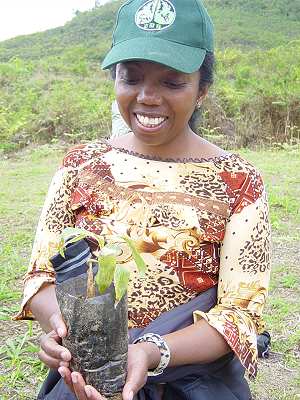 The head of the NAT station with plants from the rain forest |
 Diademed Sifaka (Propithecus diadema diadema) |
February 02, 2005:
On February 2, 2005, the „WORLD WETLANDS DAY“, the moore area TOROTOROFOTSY near Andasibe/East Madagascar had been integrated into the RAMSAR list of the world's most important wetlands as the fourth wetland of Madagascar.
The only German organisation for nature conservation which works in Madagascar, the „Foundation for Tropical Nature and Species Conservation (NAT)“, has assessed an uncommonly high biodiversity in this area after years of investigation: Nearly 200 (thereof around 90% endemic) vertebrate species like lemurs and other mammals, birds, reptiles and amphibians – including the famous Madagascan Golden Frog Mantella aurantiaca, which only lives here and nowhere else in the world –, and furthermore 63 species of orchids and many other rare plant species.
Therefore, on Feburary 22, 2001, the NAT foundation had successfully submit an application at the Madagascan government (Comité National RAMSAR, DGEF) to integrate the rain forest moore area Torotorofotsy into the RAMSAR list of the world's most important wetlands by the RAMSAR commission in Gland (similar significance as an eco-label like „world nature heritage“ of the UNESCO).
Madagascan Golden Frog (Mantella aurantiaca)

Research relevant to habitat and species conservation
Project: The Madagascan golden frog Mantella aurantiaca, protection by CITES and its habitat requirements
Social and reproductive behaviour, preliminary inventories, mapping, breeding area, living space,
habitat requirements/viable populations, threats, protection by the Convention of International Trade in Endangered Species (CITES),
conservation recommendations. See publications Zimmermann – work finished.
Project: Herpetological Research and Taxonomic Investigations in the Philippines
As a preparation of the "Herpetological Research and Taxonomic Investigations in the Philippines" project, we went on a journey to the
Philippines in April/May, 1996. We had talks with William Oliver, Manila (Fauna & Flora International), collaborators of the Department of
Environment and Natural Resources, Manila, and with potential project collaborators of the Philipines. In the meantime, the Memorandum of
Agreement, which allows the realization of the project, is ready to be signed at the research institute Alexander Koenig. Further negotiations
with potential collaborators of the Philipines are being made. See publications Gaulke.
Project: Population structure of Varanus bengalensis and V. salvator in Sri Lanka
In August 1996, the first field examinations of the population structure of Varanus bengalensis and V. salvator in Sri Lanka
were made, financed by the DFG. A several years' co-operative project, managed by Anslem de Silva, Sri Lanka, and M. Gaulke, Deutschland
is planned. A project application has been worked out in the meantime, and the first results of a pre-examination have been published.
See publications Gaulke.
Project: State, population structure, and protection of Varanus salvator in the north Sumatra province of Indonesia
In January/February 1997, radiotelemetric examinations on the activity rhythm and activity radius of Varanus salvator, have been undertaken
in the north Sumatra province of Indonesia. The field work was supported by the "Bundesministerium für Umwelt, Naturschutz und Reaktorsicherheit,
Bonn" in the course if the "Status, Populationsbiologie und Schutz von Bindenwaran (Varanus salvator), Netzpython (Python
reticulatus) und Blutpython (Python curtus) in Sumatra und Kalimantan, Indonesien" project.
Project: Protection of the Panay Waran
Investigation of geographic spread, behaviour, habitats and protection measures of the recently discovered waran on the Philippine peninsula Panay.
See publications Gaulke.
2000 years ago, Madagascar, a dream island for nature-lovers and the priority of our nature conservation work, was still completely covered
with forest. Today only some dry wood area and 8 to 10% of the original rain forest still exist. But here lives a variety of species that can
hardly be found at any other place on earth. Additionally, due to the separation of Madagascar from the African continent, a unique
flora and fauna has developed for 140 million years which can't be found anywhere else in the world. A unique "Treasure of Nature"
("Sanctuaire de la Nature") has developed, indeed.
To date, more than 150 species of orchid, 12 species of lemurs, over 70 species of reptiles and 100 species of frogs, and about 180 species of butterflies
have been discovered in the protected area system around Andasibe. This area, encompassing marshland (about 64,200 acres, about the size of Stuttgart) is one of the most species
rich in the world.
But all this is highly endangered by the intended drainage of the valuable wetland area for rice growing, and by slash-and-burn rice
cultivation of the surrounding water catchment, originally covered in rainforest. Even the small marsh rain forest area Torotorofotsy with a size
of 32 square miles absorbs more than 5,000,000 tons of CO2.
Not only are we beginning to restore rainforest and habitat continuity through planting corridors of native trees between protected areas but we
are also involved in developing more sustainable livelihoods with and for the local people.
Map of Madagascar with the protected area system around Andasibe
*) Reafforestation area NAT = ecological corridor (Project Holloway)
Project: Declaration as a nature reserve of a wetland unique within Madagascar, TOROTOROFOTSY marsh and surrounding rain forest,
near Andasibe/East Madagascar
Flagship species Mantella aurantiaca, the Golden Frog.
Studies on the biotic and abiotic factors in the designated nature reserve, inventories of the flora and fauna, socio-economic surveys. Preliminary examination completed (see table below).
Etude préliminaire 73 pages and 4 appendices handed in. Results inter alia: Largest biodiversity worldwide and highest
endemism with the vertebrates investigated on 32 square miles of the projected preservation area.
See table:
BIODIVERSITY AND ENDEMISM Rain Forest and Moore Area TOROTOROFOTSY MADAGASCAR 83 km2 (=0,014% of the Madagascan area) 587 000 km2 Fauna Species IUCN/CITES etc. Endemic Species Lemurs * 11 11 100% 32 Other mammals 36 >13 94% ~90 Birds 124 >28 78% ~256 Reptiles 73 >9 100% ~290 Amphibes 81 >2 100% ~170 Total 325 ~838 as of 1999 as of 1994 as of 1994 as of 1994 Flora Orchids 117 ~85% 960 Total 688 ~89% >7.300
* Together with the rare lemurs of Madagascar, allocebus trichotis, the Hairy-Eared Dwarf Lemur (rediscovered by Rakotoarison, Zimmermann & Zimmermann
1996) in the Dragon Tree Rainforest Maromiza and Ambato there is no place in Madagascar with more than 12 Lemur species.
See publications Zimmermann.
First study completed in 1999. Application from NAT to DEF in 2001 for integration of the area into the RAMSAR list of the world's most important wetlands (similar significance as an eco-label like "world nature heritage" at the UNESCO). Application of Madagascar submitted to UNESCO, Gland, Switzerland, in January 2004.
Projekt: Creation of two corridors of natural forest in the partly degraded rainforest area AMBATO linking two protected areas near Andasibe/East Madagascar by reafforestation
Preparations initiated. See publications Holloway and Zimmermann.
Project: Protection of the partly degraded AMBATO Rain Forest Area near Andasibe/East Madagascar within the scope of the entire project and lasting agricultural development
Preparations initiated. See publications Zimmermann.
Project: NAT reserve "Dragon Tree Rainforest Maromiza" near Andasibe/Ostmadagaskar
Flagship species Allocebus trichotis, Hairy Eared Dwarf Lemur.
In progress. See publications Zimmermann.
On account of preliminary examinations of the NAT foundation on the flora and fauna of the area, an agreement was signed by the DGEF and NAT in 2001 for the conservation
of this forest area, which is of high strategic and ecologic importance for the protected rain forest area system: Exploitation of the forest of any kind is prohibited, protection of the
4.000 ac. sized area with frontiers created, partly reafforestation of around 1.000 ac., eco-tourism on around 890 ac., absolute protection of 2.000 ac. of healthy rain forest, lasting
development projects for the inhabitants, inventory of the flora and fauna etc.. Taking an inventory of the partly degraded area (around 890 ac.), GERP, SMNS and other scientists
have found out until the end of 2003:
Project: Sustainable development measures for the Andasibe region (East Madagascar)
Project: Support of the eco-tourism for the region of Andasibe and education of tourist guides and rangers
Within the scope of the eco-tourism project, tourist guides and rangers are trained and the inhabitants are given courses in environment education at the new NAT field station.
Project: Adding the Mantella aurantiaca (Madagascan Golden frog) into appendix II of the Washington
Convention of Species Conservation
Project: Examination of the designated Torotorofotsy National Park in Madagascar for use as a research/monitoring station for population studies
Project: Adding the Mantella species into appendix II of the Washington
Convention of Species Conservation
Project: Le Projet Forêt pluviale du "NAT", une Sytème de Jonction des Aires Protégé
es à Andasibe-Madagascar pour la Protection de la Nature et de l'Homme
Project: L'Etude préliminaire des Forêts et Marais de Torotorofotsy à Andasibe-Madagascar
Project: Etablir le complex des Marais et Forêts de Torotorofotsy-Andasibe comme Site RAMSAR
Project: Proposition "SITE DE CONSERVATION ANDRIANDAVIBE (Andasibe)"
See activity reports NAT 1998, 1999, 2000, 2001, 2002, 2003 i.a. with reports on exhibitions "EXPO 2000", "Wilhelma-Ausstellung 2002",
on the event at the Mediothek Stuttgart and on TV films of ARTE, ZDF and 3SAT.
(Project Management: Helmut Zimmermann)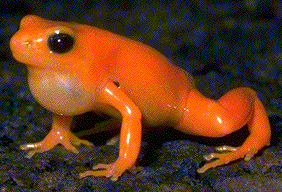
(Project Management NAT: Dr. Maren Gaulke)
(Project Management NAT: Dr. Maren Gaulke)
(Project Management NAT: Dr. Maren Gaulke)
(Project Management NAT/ZGF: Dr. Maren Gaulke)
Projects for Nature Conservation in Madagascar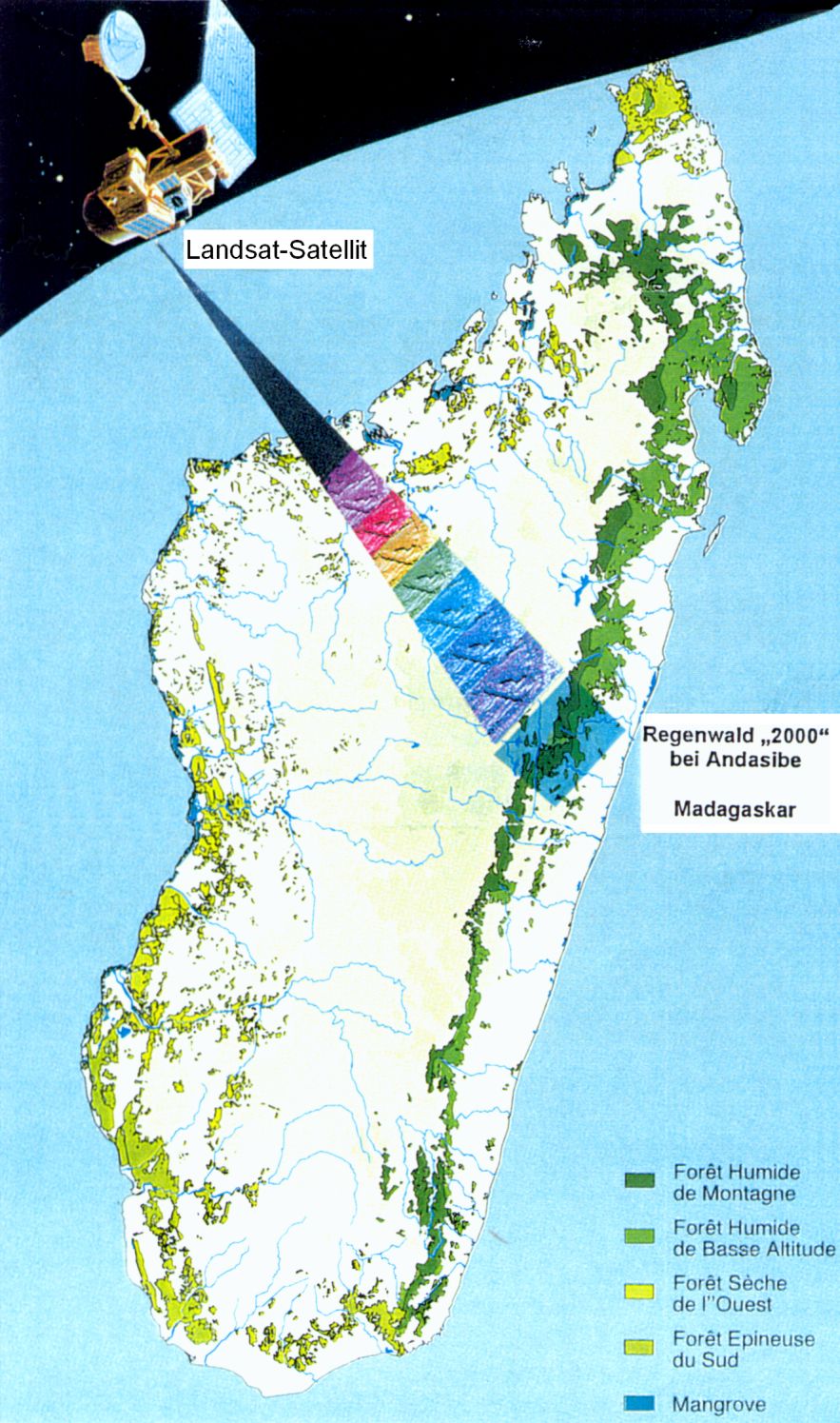
The protected rainforest area system Andasibe / East Madagascar
Conservation area concept between the northern and southern
Madagascan rainforest 1999/2001
Cultivation and Planimetry for the whole Project
1.0 National park "Mantadia" ~ 24 700 ac. 1.1 Rainforest ~ 21 000 ac. 1.2 Tavy (Wasteland-arable land, eastern buffer zone) ~ 2 450 ac. 1.3 Tavy (Wasteland to reafforest) * ~ 1 250 ac. 2.0 Target nature reserve "wetland-rainforest area Torotorofotsy" ~ 20 500 ac. 2.1 Moor ~ 3 000 ac. 2.2 Rainforest ~ 7 500 ac. 2.3 Tavy (Wasteland-arable land for later reafforestation) ~ 5 000 ac. 2.4 Eucalyptus wood ~ 5 000 ac. 3.0 Target National Park "Ambato" ~ 13 100 ac. 3.1 Rainforest ~ 4 500 ac. 3.2 Tavy (Wasteland-arable land for later reafforestation) * ~ 5 000 ac. 3.3 Tavy (Wasteland-arable land, buffer zone) ~ 2 500 ac. 3.4 Eucalyptus wood ~ 1 100 ac. 4.0 Indri reserve ~ 2 000 ac. 4.1 Rainforest ~ 1 975 ac. 4.2 Fish farming plant, Tourism and the like ~ 25 ac. 5.0 Reserve NAT foundation + DGEF "Dragon Tree Rainforest Maromiza" ~ 4 000 ac. 5.1 Rainforest ~ 3 000 ac. 5.2 Tavy (Wasteland-arable land for reafforestation) ~ 1 000 ac. Total rainforest area system ~ 64 300 ac.
The map (satellite photo) of the Foundation for Tropical Nature and Species Conservation (NAT) is the basis for cultivation and planimetry. The north of the National Park Mantadia
and the Torotorofotsy marsh are adjacent to the large rainforest area Forêt Sihanaka. The south of the "Dragon Tree Rainforest" Maromiza is adjacent to the large
rainforest area Vohidrazana.
This rainforest area system will ensure the still missing ecological link between the northern and southern rainforest in the centre of Madagascar.
Re-dedication and integration of the entire project into the new NAT project by application at DEF 2003 with 264.290 ac. “Proposition Site de Conservation Andriandavibe,
Andasibe
Satellite photo with registration of the rainforest area system near Andasibe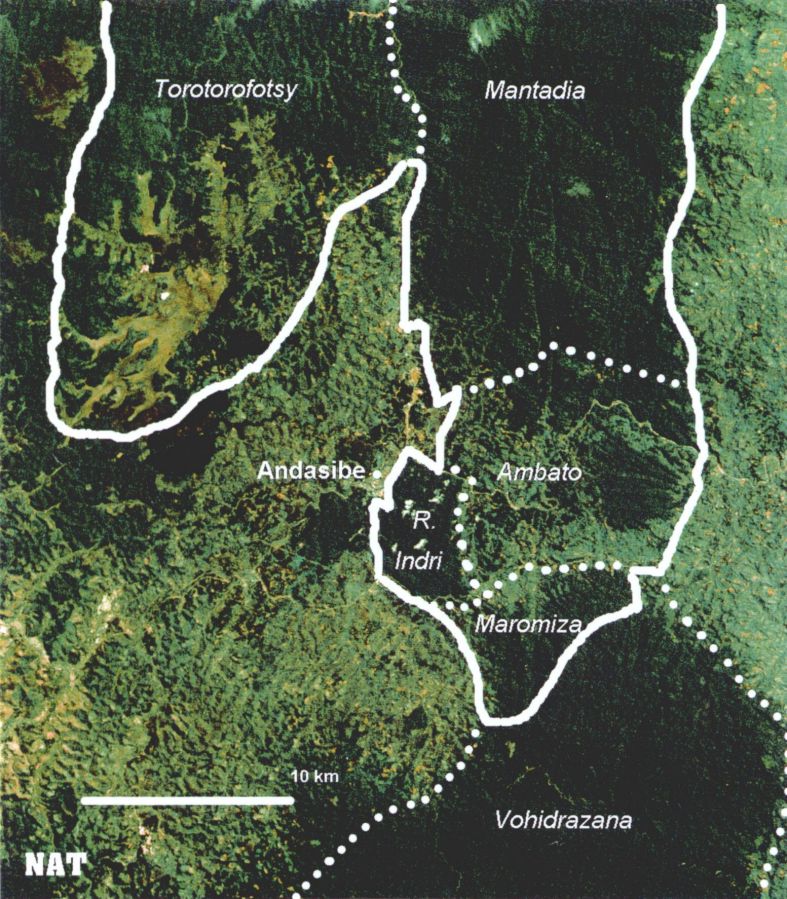
Projects on Habitat and Species Conservation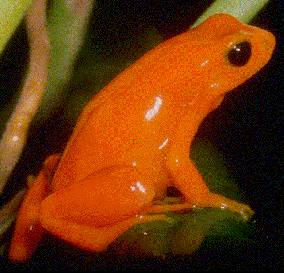
(Project Management: Helmut Zimmermann)
OF THE MOORLAND RAIN FOREST AREA TOROTOROFOTSY NEAR
ANDASIBE, EAST MADAGASCAR
estimated
(Expert's opinions 1999 und 2001, project management: Helmut Zimmermann, Louise Holloway)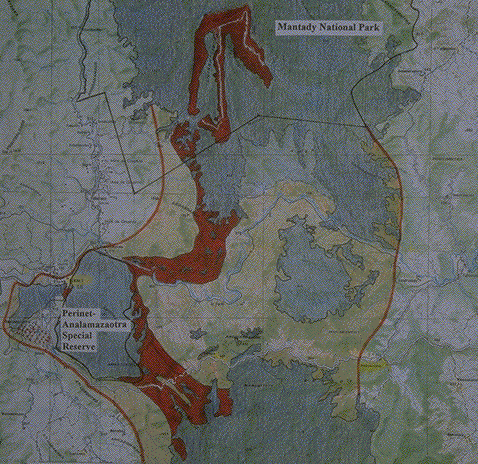
(Project Management: Helmut Zimmermann)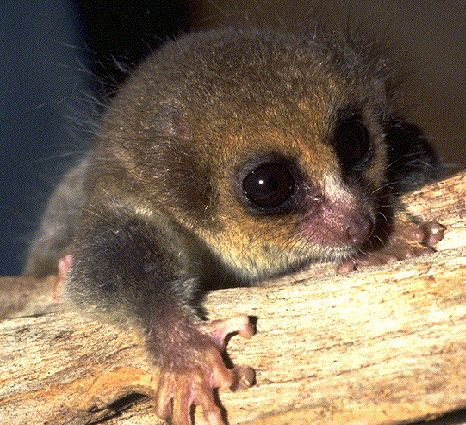
(Project Management: Helmut Zimmermann, Dr. Blanchard Randrianambinina, V. V. Harisoa in cooperation with DGEF and ANGAP)
The examinations are being continued and promise a high biodiversity worldwide with highest endemism rate at high density. Further works have been initiated.
The president of Madagascar Marc Ravalomanana and his Ministers and specialists visited a part of the forest on March 27th, 2004 and informed the public at large about his positive impressions.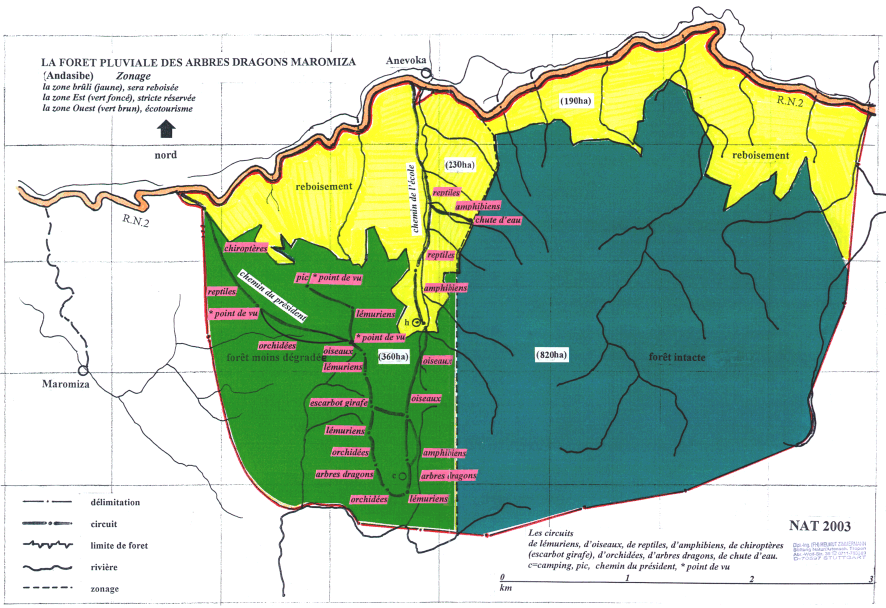
Projects incorporating community based sustainable resource use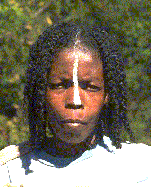
(Project Management: Helmut Zimmermann, Dr. Blanchard Randrianambinina, V. V. Harisoa in cooperation with DGEF)
In progress. See publications Zimmermann.
Education Programmes
(Project Management: V. V. Harisoa, Dr. Blanchard Randrianambinina, Helmut Zimmermann in cooperation with DGEF and ANGAP)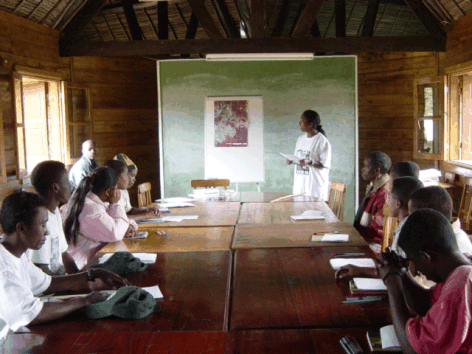
Education of the potential tourist guides at the NAT-Station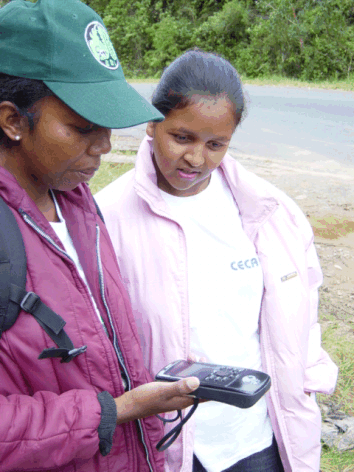
Dipl.-Biologist Harisoa teaches a potential tourist guide in the application of the satellite based navigation system GPS
Development of Policy for Biodiversity Conservation
Opinion for the Bundesamt für Naturschutz, Bonn
(Opinion H. Zimmermann finished).
Opinion for the Bundesamt für Naturschutz, Bonn
(Opinion H. Zimmermann finished).
Opinion for the IUCN/SSC Wildlife Trade Programme, Analysis of the Proposa.
(Opinion H. Zimmermann finished).
Draft for the Ministère des Eaux et Forêts (MEF) and the Association Nationale pour la Gestion des Aires
Protégées (ANGAP), Antananarivo, Madagascar.
(Opinion H. Zimmermann finished).
Opinion for the Ministère des Eaux et Forêts (MEF) and the Association Nationale pour la Gestion des Aires
Protégées (ANGAP), Antananarivo, Madagascar.
(Opinion H. Zimmermann finished).
Opinion for the Direction Générale des Eaux et Forêts (DGEF) and the Comité National RAMSAR, Antananarivo, Madagaskar.
(Opinion 2001 H. Zimmermann finished)
Opinion for the Ministère de l’Environnement, des Eaux et Forêts (MINEF), Direction Générale des Eaux et Forêts (DGEF), Antananarivo, Madagaskar.
Draft for an extensive conservation area of around 264.290 ac., which includes the present protected rainforest area system Andasibe with around 64.220 ac.,
corresponding to the president's demand for an increase of the conservation areas from 3.7 million acres to 18.5 million acres.
(Opinion 2003 H. Zimmermann partly finished).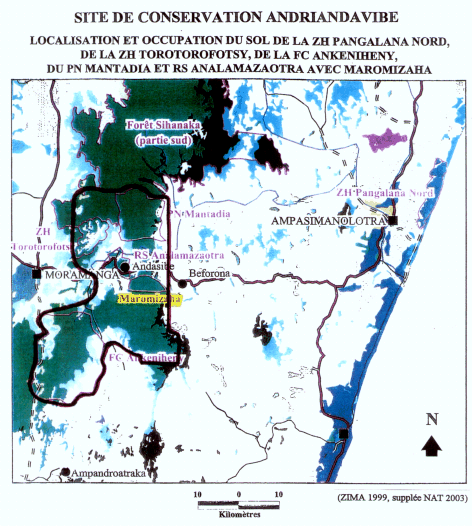
Publicity for logistic and financial realization of the goals